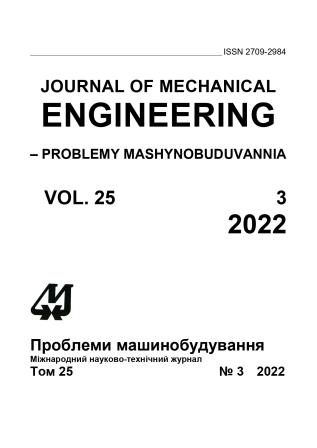Development of a Methodology for Calculating the Stress State and Resource of a Hydrogen Generator Using the Finite Element Method
Abstract
An experimental stand was created to study the thermobaric and chemical influence of hydrogen on the identification of hydrocarbon production. The said stand allows to reproduce chemical-technological processes as close as possible to real formation ones. This stand makes it possible to study the kinetics of not only hydrogen, thermobaric and chemical effects, but also other thermal gas chemical processes, including hydrogen generation. The main element of the experimental stand is a hydrogen generator, the components of which work at high pressures and temperatures under conditions of hydrogen embrittlement of mechanical properties and an aggressive environment that causes corrosion of its inner surface. Based on this, the development of a methodology for calculating the thermal stress state of the generator, its strength under hydrogen embrittlement conditions, and its resource becomes relevant. Based on the finite element method, a methodology for calculating non-stationary temperature fields and the thermal stress state that occur in the hydrogen generator during thermobaric and chemical processes of varying intensity is proposed. The methodology allows to take into account the features of the geometry of the structure, the time-varying temperature and pressure distributions of the reaction products, the temperature dependence of the thermophysical and mechanical properties of the hydrogen generator material. Thanks to the application of the developed software, a study of the hydrogen generator thermal stress state during two real thermobaric and chemical processes of different intensity was carried out. Graphs of temperature and pressure changes of the reaction products of hydroreactive substances in the generator over time, which were registered during the experiment conduction, were used. The distribution of non-stationary temperature fields and stresses in the hydrogen generator elements was obtained. Areas of maximum load of generator elements are defined. It was established that during the flow of the studied thermobaric and chemical processes, pressure makes a greater contribution to the thermal stress state. The obtained results and the developed theory and software can be used in the study of generators of other designs with other thermobaric and chemical processes occurring in them.
Downloads
Published
Issue
Section
License
Copyright (c) 2022 П. П. Гонтаровський, Н. В. Сметанкіна, Н. Г. Гармаш, І. І. Мележик, Т. В. Протасова

This work is licensed under a Creative Commons Attribution-NoDerivatives 4.0 International License.
All authors agree with the following conditions:
- The authors reserve the right to claim authorship of their work and transfer to the journal the right of first publication of the work under the license agreement (the agreement).
- Authors have a right to conclude independently additional agreement on non-exclusive spreading the work in the form in which it was published by the jpurnal (for example, to place the work in institution repository or to publish as a part of a monograph), providing a link to the first publication of the work in this journal.
- Journal policy allows authors to place the manuscript in the Internet (for example, in the institution repository or on a personal web sites) both before its submission to the editorial board and during its editorial processing, as this ensures the productive scientific discussion and impact positively on the efficiency and dynamics of citation of published work (see The Effect of Open Access).

